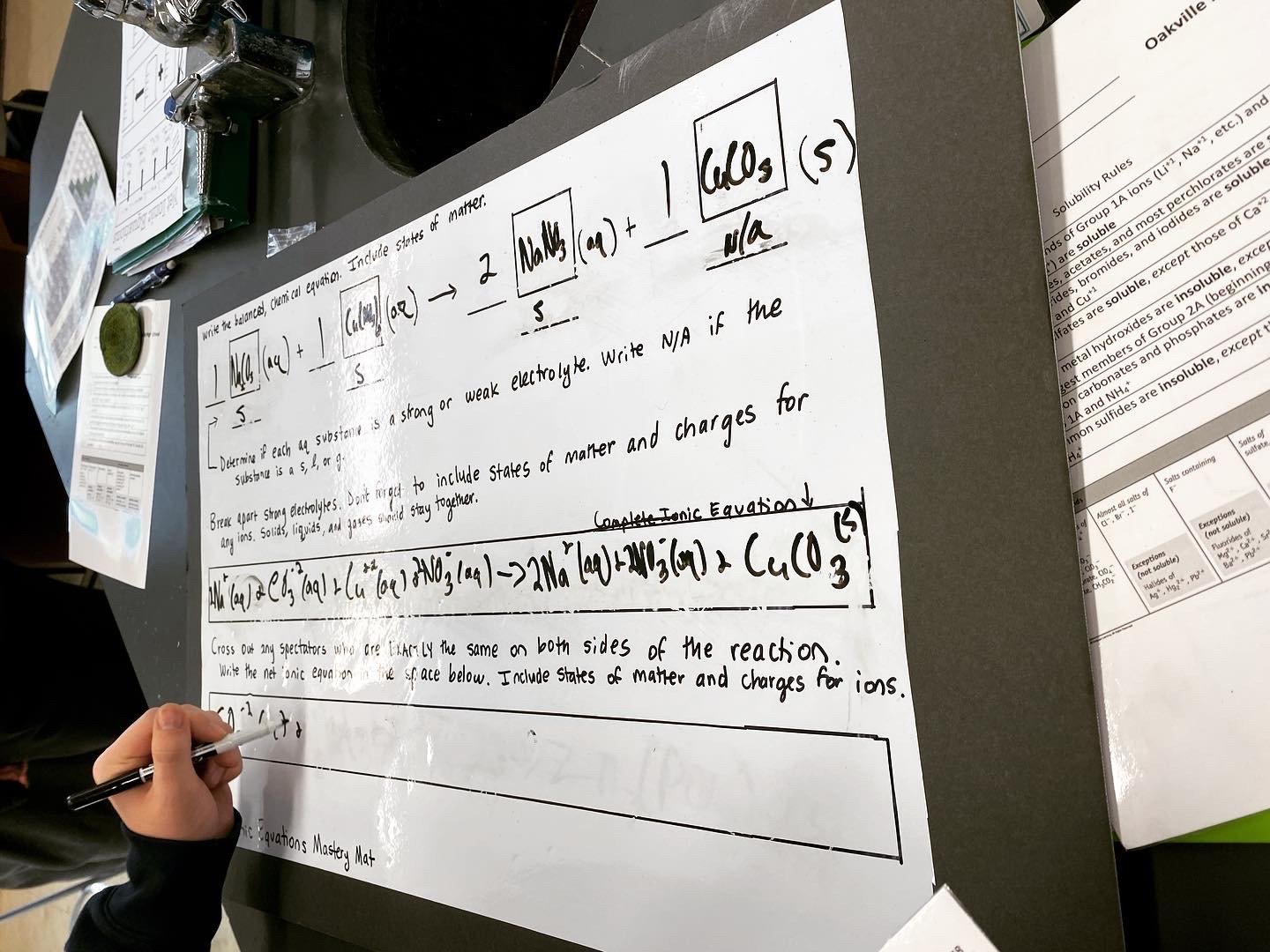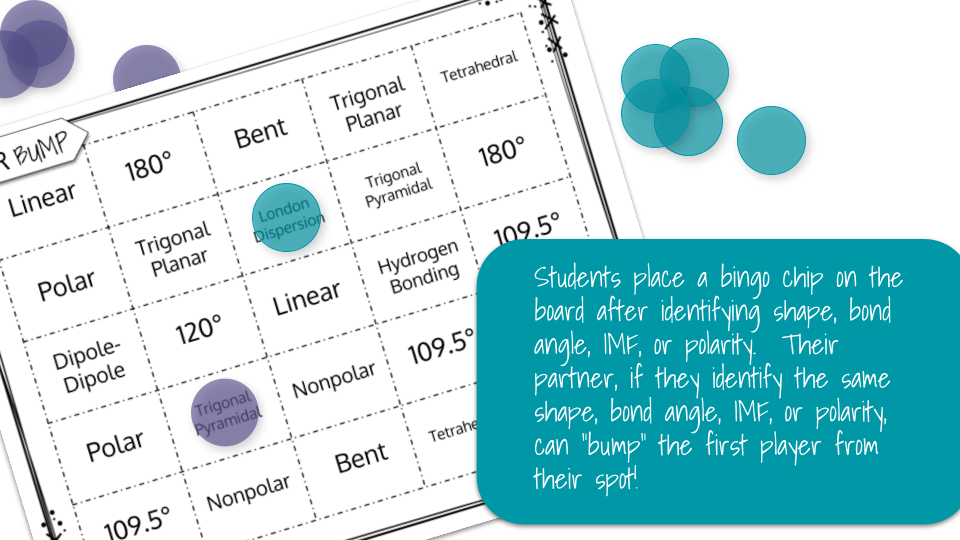9 Task Card Ideas for High School Chemistry
Disclaimer-There may be some links in this post that are affiliate links. This means I will make a small commission if you purchase something using my links, but it is at no cost to you.
Most teachers have them…task cards. Or maybe flashcards. But how can you use task cards in the classroom so that they aren’t the same every time? How can you keep students engaged with the task cards? In this post, I am going to give you 10 ideas that can be used in conjunction with task cards in the high school chemistry classroom.
Stinky Feet.
If you haven’t played stinky feet with your students, you are missing out! This is a great review activity that can easily be played with task cards and flashcards. And if you have any of those lying around, it really does not take much prep. Here’s how it works.
You draw a foot on the whiteboard. I find an outline of a foot, put it on the projector, and trace over it with a dry erase marker. Once that is complete, you add points on the board using post-its. On the back of the post-it (sticky side), put a point, such as +7. You will create a variety of post-its with different point values, including both positive and negative point values. Stick them to the board, and the point values will not be seen by the students.
Students play in teams, answering questions from task cards. You could do this a variety of ways. I personally have a set of task cards for each team. They answer the card, tell me the answer, and if they are correct, they go up to the board and grab a post-it. But you could have a set of task cards at the front that they draw from, or you could have teams answer on whiteboards, etc. When the team goes up to the board and draws a post-it, they don’t know how many points they are getting (or losing if it’s a negative value), hence the stinky feet part! It’s totally random, which increases the fun. Keep going until you call time, until you run out of cards, or until you run out of post-its.
2. Jenga.
Jenga is a great way for students to use task cards in a game-like format. You can label each Jenga block with a number. They choose a block, and then must answer the card/question corresponding to that numbered block. If they get the answer correct, they get to pull the Jenga block.
Another way that allows for some student choice or differentiation is to color the Jenga blocks with different colors (paint or wrap with colored tape). Each color corresponds to a different category or level of question, depending on how you set it up. For example, more in depth problems could be one color, and easier problems could be another. Or you could have different categories, and choosing a color allows the student to pick an area of content they want to answer a question from. If you use the color blocks, I would recommend printing the task cards on different color papers that correspond to the different colors on the Jenga blocks.
The biggest obstacle with Jenga is getting enough sets to engage the entire class. Ask around and see if anyone has some lying around, go thrifting or to garage sales, or maybe add some to an Amazon wish list.
3. Connect Four.
Another game-based format. Students take turns drawing a card from a set of task cards. If they answer the card correctly, they get to put in a chip. Whoever gets the four in a row first is the winner.
That’s it. The biggest obstacle is once again getting enough sets for your entire class to be engaged. I slowly added to my collection until I got 12 total (enough for pairs in my classes). Ask around, go thrifting, or add them to an Amazon wishlist.
4. Mastery Mats.
Mastery mats are great for task cards that include either calculations or problems that utilize a series of steps. You can print a mat on 11x17 paper and laminate it, both for durability, and for use with dry erase markers. Students could work in pairs to answer a question from a task card, and work the problem out on the mat.
I have also created larger mats from large dry erase boards. I didn’t actually have any dry erase boards that were very big, so I got some dry erase sticker paper and stuck it on to a foam board from the Dollar Store. If you write on it with Sharpie, that will stay, and students can use the whiteboard surface with a dry erase marker. I have to say, I never expected how much my students enjoyed this the first time I brought them out. They had never seen anything like it…and different makes it exciting. Even though they’re just using task cards. Tip…ask students not to write with dry erase markers on top of the Sharpie, because when they erase the dry erase, it can also erase your Sharpie. And then you have to trace back over everything with a Sharpie again. Ask me how I know.
5. Quiz-Quiz-Trade.
You can always use this classic when you need to fill a few minutes and you want students to get repetition of content. Each student starts with a card, whish should have a question or task on one side. They will stand up and partner with someone else in the class. Once together, students will quiz each other on their cards. I recommend putting the answer on the back, so that students can not only check their work, but Partner A could provide tips or hints to Partner B if Partner B is struggling to come up with the answer. After students have quizzed each other on their cards, they trade their cards (so that they don’t have the same one every time and can get exposed to more), and find a new partner.
6. Showdown.
Showdown involves a team of students who all sit together at a table or within an area. One student holds a card up to the rest of the table, and the other students in this group will answer the question or task on a whiteboard. The student holding the card will then ask the other students to show their answers when everyone is ready. This student checks the work of the others (hint-put the answer on the back of the card for self-checking), and provides tips and hints if one or more of the students did not put the correct answer on their whiteboard. Once that question is complete, the task card stack gets passed to the next student in the circle so that the same kid doesn’t hold the problems for the entirety of the activity. That new student holds up the question, and all others around the table answer on their whiteboards.
7. Poker Chip Review Game.
I found this idea on the blog of Math Dyal when I was looking for ways to incorporate multiple choice practice in my AP Chemistry classroom. I project a multiple choice question on the screen up front. The tables discuss the question and decide on which answer choice they believe is correct. They also decide how much confidence they have in their answer by placing a bet. I found these great two-sided paddles that were dry erase at Michael’s in that deals section near the front. Not sure if they are still there, but these worked great for this game with my students. They wrote their answer choice on one side and their bet on the other. If the team was correct, the bank would pay them however much they bet. If the team was incorrect, they had to pay the bank back.
I start each team with 11 chips total (white), and tell them that they must always have one so that they can still play. Depending on your poker set, you can make another chip color worth 5 points, another worth 10 points, etc. When it’s time to end the game, the team with the most points will win. This game works great with multiple choice practice, and it can also allow for discussion of answer choices. Why did you only bet 1? Why were you not as confident? Which answer choices could you eliminate? Etc.
8. Bump.
Bump is an engaging partner game that requires a game board, task cards, and Bingo chips for each player. One student draws a card, and if they answer correctly, can place a chip in a square on the board. The next player draws a card. If they answer correctly, and it can apply to the same square the other student already put a chip in, they can “bump” the other player out of the square. I’ve got an entire blog post on how to create a game of bump, along with the rest of the rules, and you can read that blog post here.
If you don’t have time, you can check out my already made Bump games available in my TPT store.
9. Tic Tac Toe.
Students can play a game of tic tac toe using task cards. Simply have the first player pull a card and answer the question. If they answer correctly, they get to make their mark (X or O) in the spot of their choice. Game play continues until someone can get three in a row. To play longer, students can play more than one game and keep track of how many games they won, and the highest total would be the winner.
There you have it. 9 ideas for using task cards in the high school chemistry classroom. If you’ve got more, I’d love to hear about them! Contact me by email at rebecca.unbrokenbond@gmail.com or find me on Instagram. I hope some of these ideas sparked some ideas for you. If you don’t have a lot of task cards, or don’t have a lot of time to make some, check out the task card sets I have available in my store. Thanks so much for reading! Happy teaching!
Affiliate Links.
Disclaimer-I make a small commission if you use these links to purchase an item at no cost to you.








